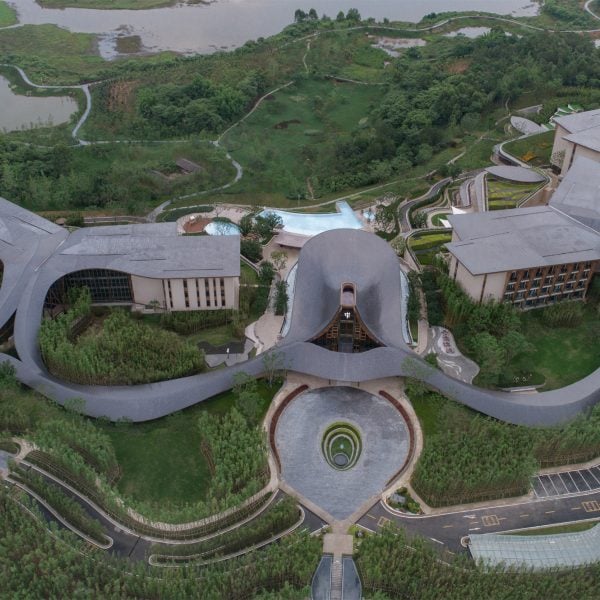A cluster of buildings interconnected by sweeping, tentacle-like canopies form The Spine Resort, a rural resort that Hong Kong studio AIM Architecture has completed in Sichuan.
Located next to a lake an hour’s drive south of Chengdu, the resort was designed to resemble organically growing ecosystems, with covered walkways connecting each building.
AIM Architecture’s use of interconnected structures was informed by local villages, which are known for their informal arrangements of separated buildings arranged around gardens, fields, and forested areas.
“The architectural design concept originated from traditional Sichuan dwellings with contemporary design language merged on top,” the studio told Dezeen. “We strived to integrate the architecture with the local culture throughout the design.”
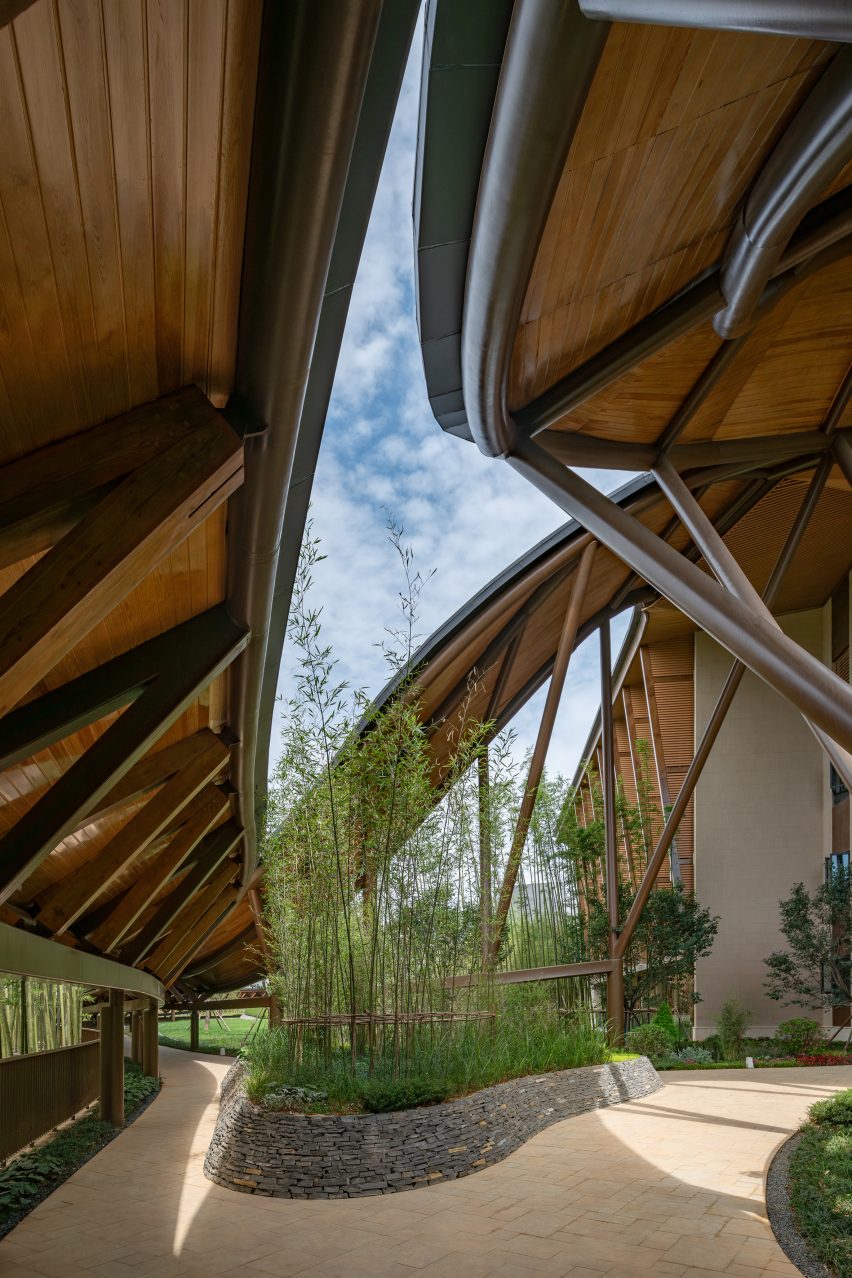
Nestled amongst smaller, curved gardens as well as a network of weaving roads and pavements, the buildings are small-scale timber structures with organic forms placed to offer privacy and frame views of the popular Qiujiayan Lake.
Between the buildings, small gardens, pools, and walkways were created.
“The design deliberately avoids huge building volumes and arranges small-scale buildings in organic forms, ensuring that living spaces and public spaces are connected in interesting ways,” said the studio.
“The shape is determined by two main features: the creation of intimate landscapes around the hotel buildings and the buildings’ orientation to the Qiujiayan Lake, one of the main attractions in the area.”
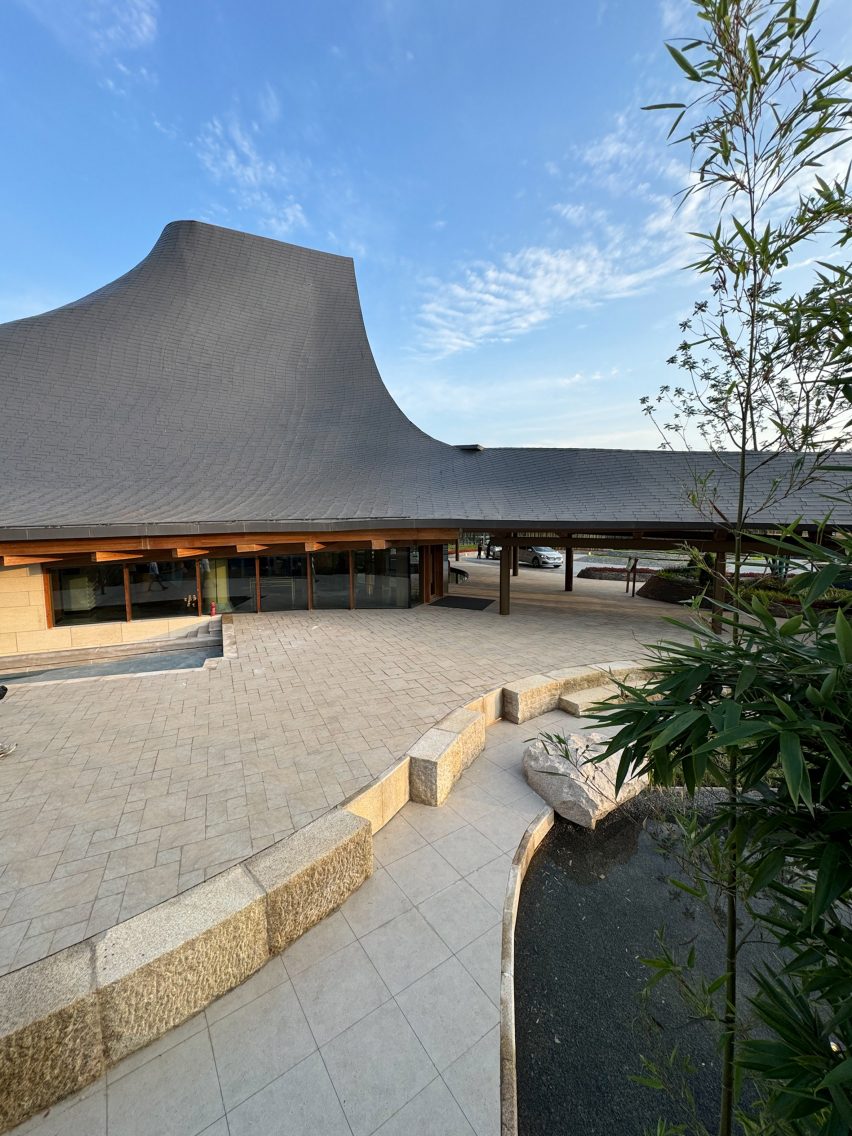
Beyond an organically shaped entrance courtyard, which can be accessed by curving driveways on either side or stepped landscaping that approaches the resort from the front, the main lobby sits at the heart of the plan.
“Located in the middle of the site, the entrance lobby with the unique double-curved roof is a main feature of the resort,” said the studio.
Topped with a sweeping roof, the lobby reaches its tallest at its front, where the structure sweeps upwards at its centre to form a dramatic glazed facade.
This glazed portion illuminates a large interior hall, which features glossy marble floors and walls and a blue, hanging installation designed to resemble a school of fish.
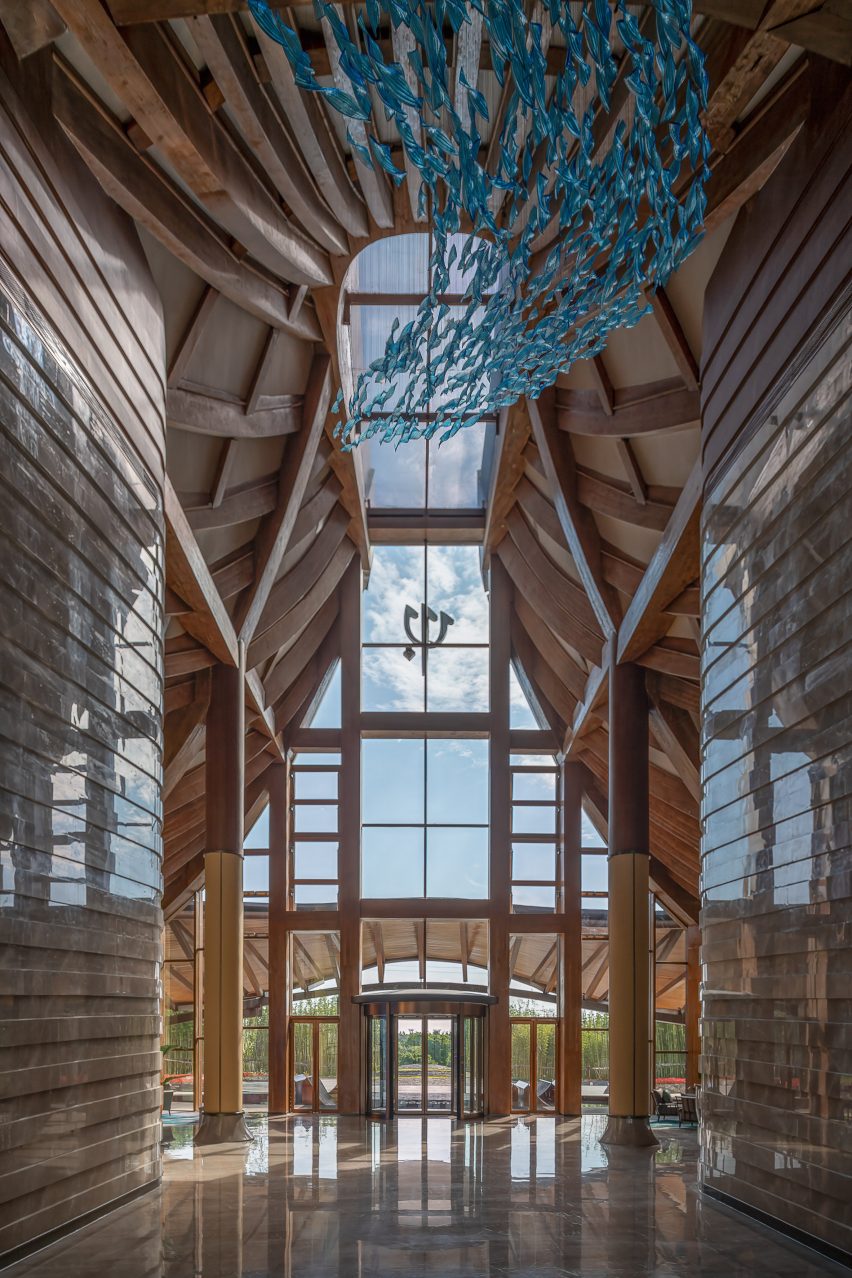
A wavy canopy sits in front of the lobby to create a covered entrance space, forming part of a network of covered walkways that branch from the centre of the resort and weave around the entire site.
Further back in the lobby, the roof curves down to create a lower structure that frames panoramic views of the lake on the other side.
The paved walkways that surround the site are covered by an undulating, pitched canopy made from wood, supported by exposed beams and brown columns.
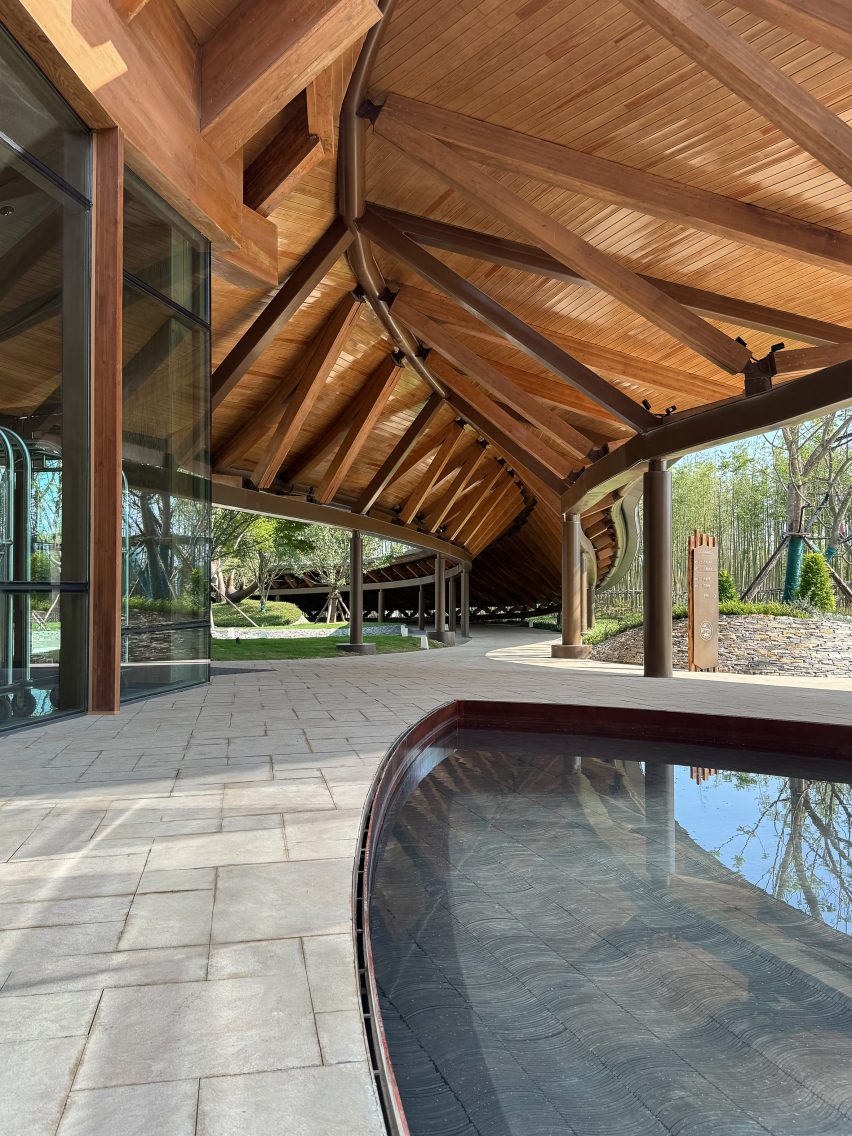
Set at different heights and angles, the curving canopies widen and dip at points, coming close to the ground to create an intimate space.
Branching from the walkway at various points across the 55,000-square-metre resort, a number of accommodation structures surrounded by gardens hold 350 guest rooms.
Closer to the buildings, the roofs over the walkways heighten, opening up to create bright, partially sheltered courtyards before sweeping up to reach the flatter roofs of the rectilinear accommodation buildings.
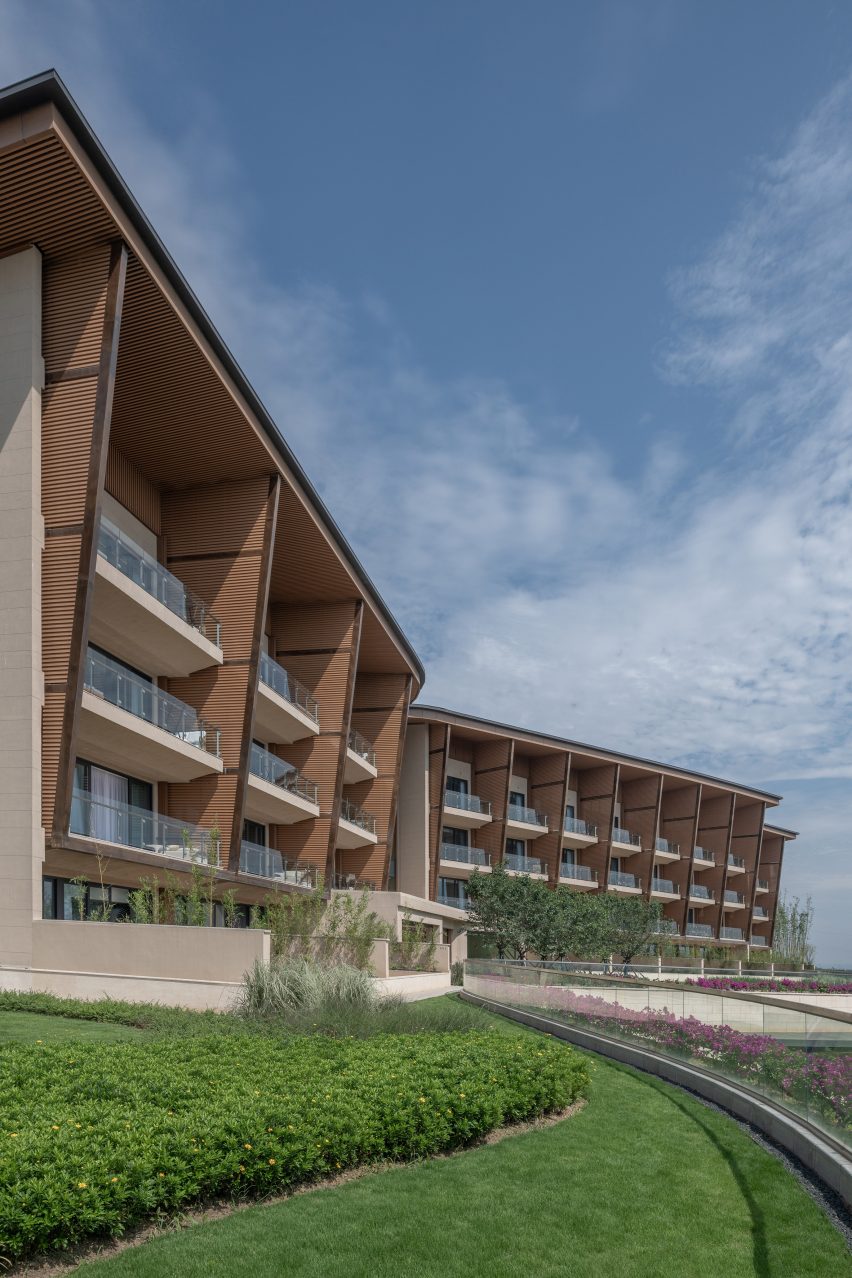
“The western roofs of each building gradually descend with elaborately designed curves, transforming into connecting corridors,” said the studio.
“The elevation of each building also varies based on the terrain, corresponding to nature and enriching the design of the walkway and the roof.”
“]
“]
Lined with grey aluminium composite panels, the roofs top the four-storey, neutrally toned structures, which feature a double-height top level.
Horizontally louvred fins emerge from the facades of the accommodation blocks, widening towards the top of each building to meet the large eaves.
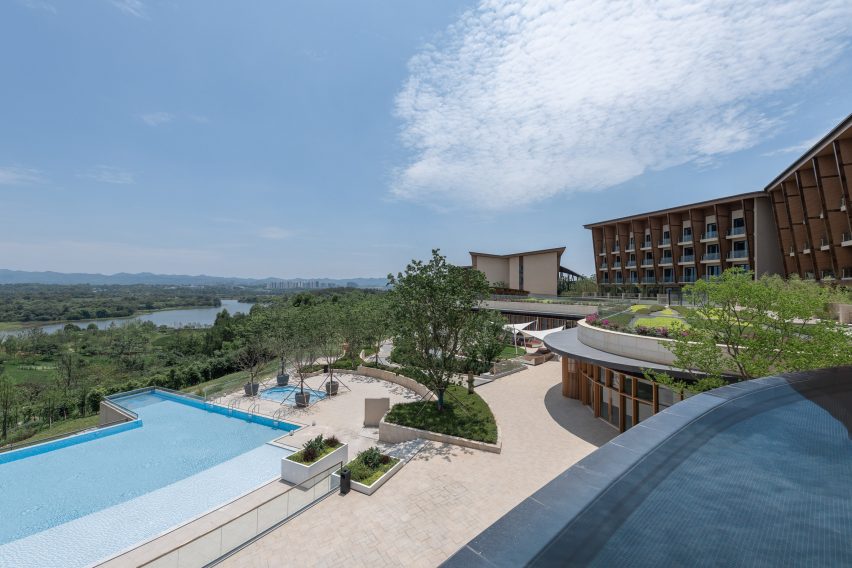
Each flat features a concrete balcony that overlooks the various gardens around the resort, while the ground-floor units open onto small gardens separated by neutrally toned walls.
Other facilities included in the resort include several sports facilities, swimming pools, and spas.
“The lakeside of the building complex is connected by podiums at the bottom, which are arranged along the contour lines of the site and respond to the slope of the site with elevation differences,” said the studio.
“Public areas such as sports facilities, swimming pools, and spas are located within.”
Other resort buildings recently featured on Dezeen include an intimate concrete music hall with curving facades and a contemporary, fog-emitting tearoom informed by clouds.
The photography is by Dirk Weiblen.

